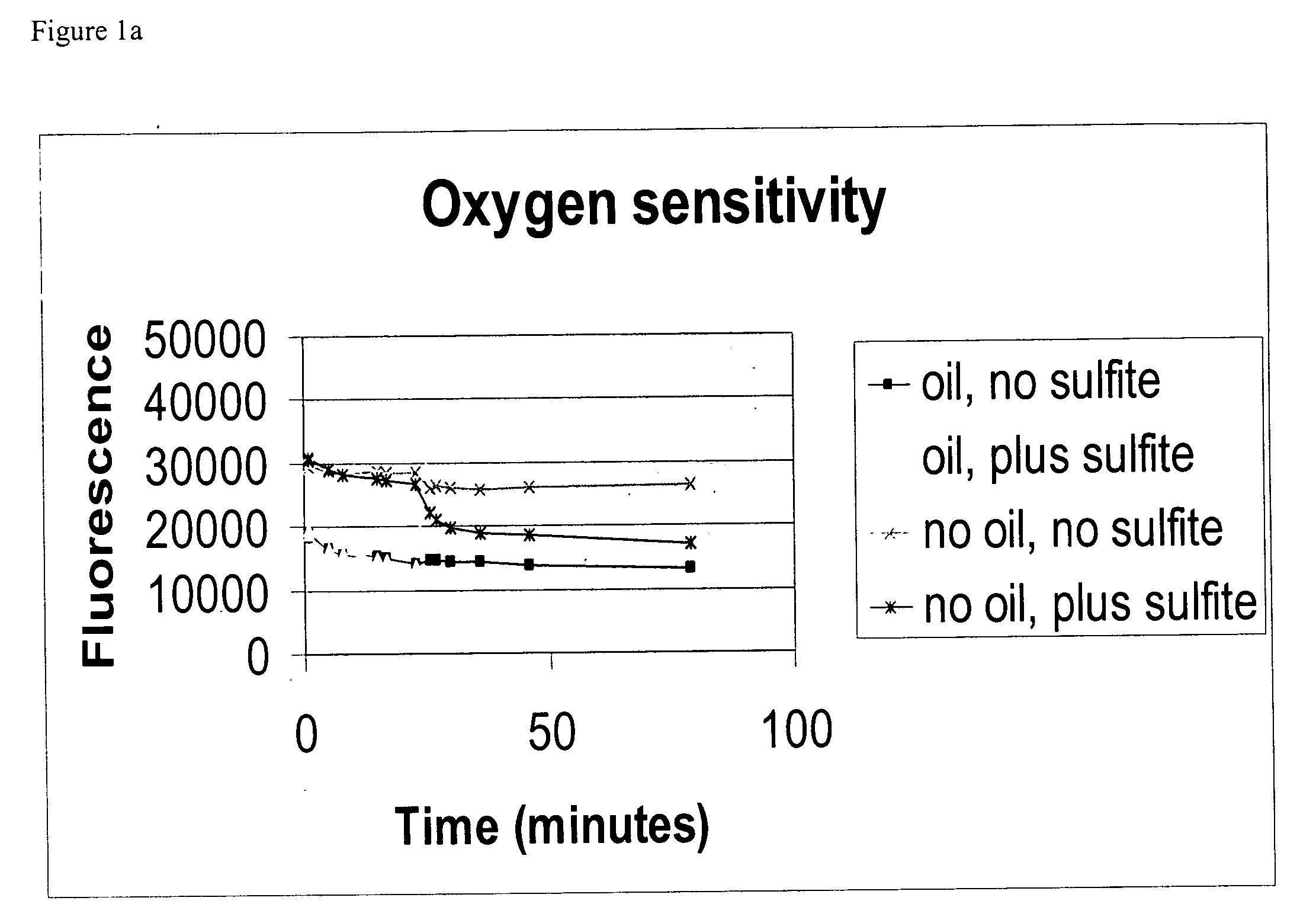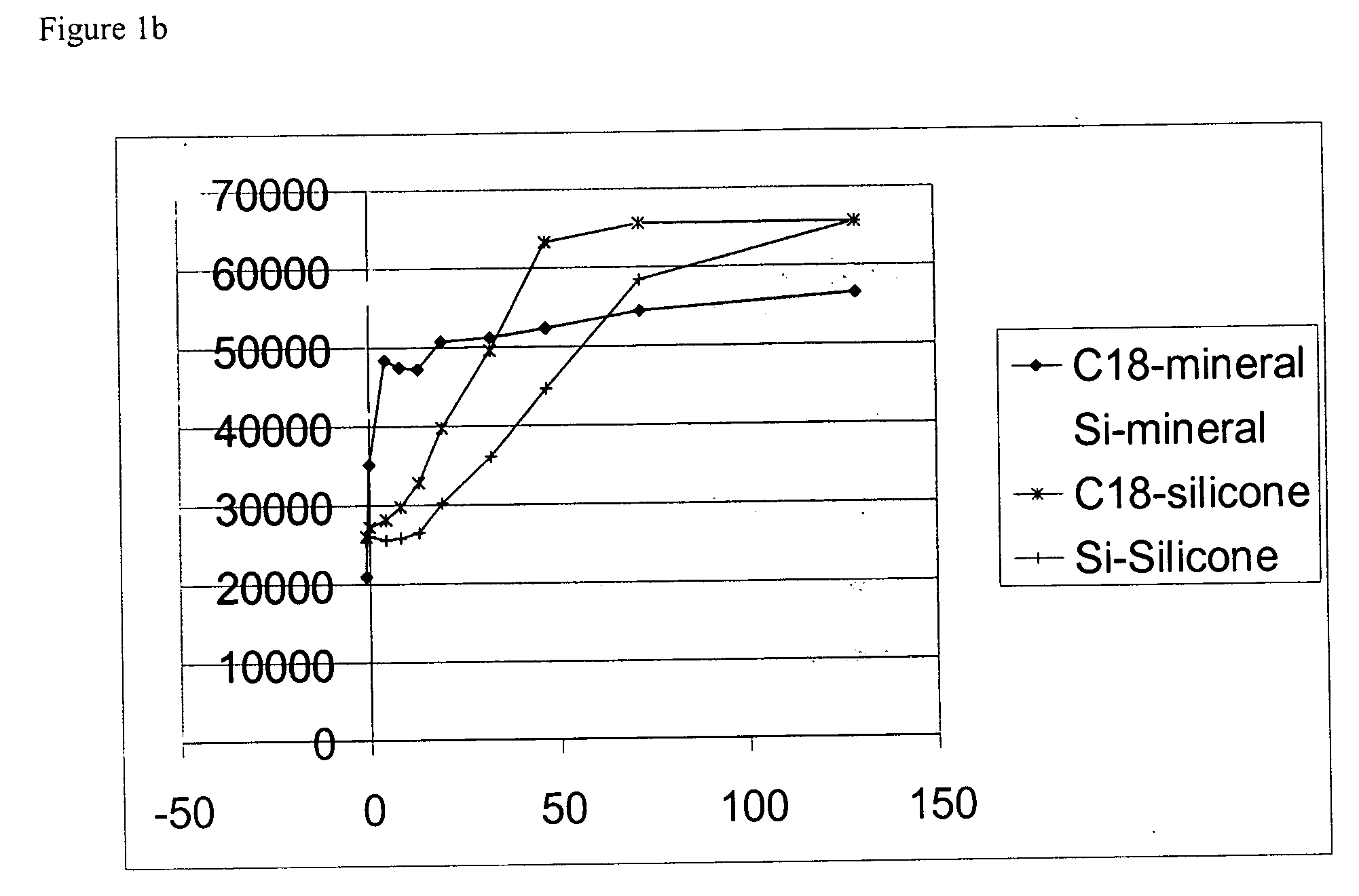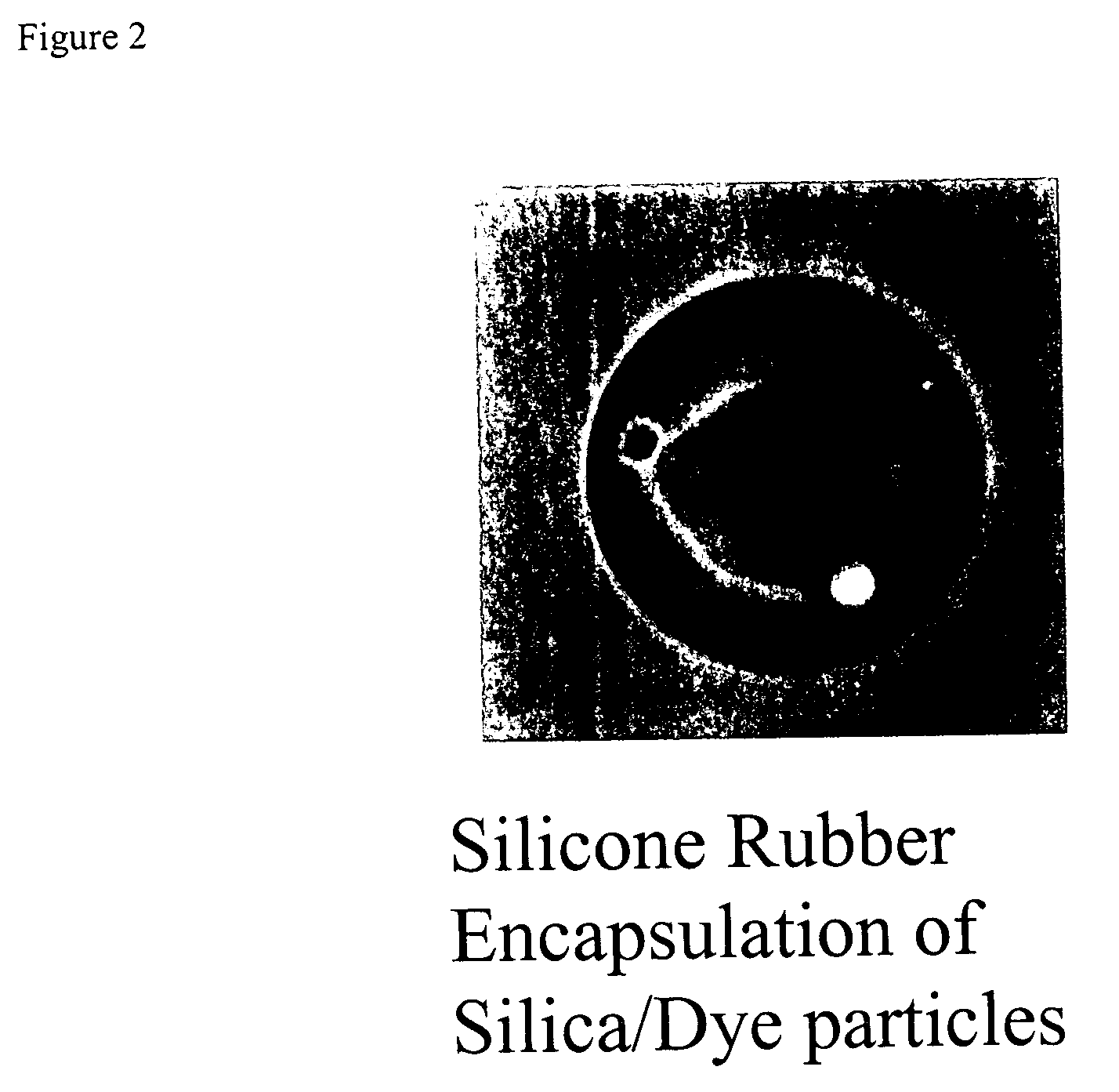Microencapsulation of oxygen-sensing particles
- Summary
- Abstract
- Description
- Claims
- Application Information
AI Technical Summary
Benefits of technology
Problems solved by technology
Method used
Image
Examples
example 1
on of Oxygen-Sensing Particles on a Carrier (Polystyrene Beads)
Part 1—Preparation of Oxygen-Sensing Beads
Ruthenium dye crystals, ruthenium (II)-tris-(4,7-diphenyl-1,10-phenanthroline) diperchlorate (Ru(PDD)3) (dye) on polystyrene beads were prepared as follows:
26.8 mg of polystyrene beads having a diameter of 105-125 μm (Polyscience) were weighed and suspended in 350 μl methanol. 18.06 mg of s-(4,7-diphenyl-1,10-phenanthroline) ruthenium (II) diperchlorate was weighed and added to 1 ml methanol to make 18 mg / l (stock A) and diluted in methanol at 1:5 (stock B) and 1:25 (stock C). 100 μl of bead suspension was mixed with stock A, B or C of the same volume to yield final concentrations of dye at 9 mg / ml, 1.8 mg / ml, and 0.4 mg / ml, respectively. The suspensions were left at 50° C. with occasional mixing. The beads were then washed in methanol 1-2 times and then 2 times in water by microcentrifuge.
Part 2—Detection of Oxygen Quenching on the Beads
To test response to oxygen, the b...
example 2
on of Oxygen Sensor Particles on Silica Gel Beads
Part 1—Dye-Adsorbed Silica Gel Beads
As further described in U.S. Pat. Nos. 5,567,598 and 6,395,506 (which are hereby incorporated by reference), Ru(PDD)3 was adsorbed onto the silica gel particle by mixing the dye crystals (17 mg) with silica gel in about 400 μl water. A series of dilutions were made at 1:2 and 1:5 by mixing the dye-adsorbed silica gel bead suspension with water.
Part 2—Detection of Oxygen Quenching on the Beads
100 μl of 0.2 M sodium sulfite was added to reduce oxygen concentration in the wells. A change of fluorescence intensity was observed. All wells had strong fluorescent signals under BMG fluorometer (37° C.).
Part 3—Comparison of Ru(PDD)3 Silica Gel Particles and Polystyrene Particles
Ru(PDD)3 adsorbed silica gel particles and polystyrene particles 100 μl were added to wells of a 96-well plate. The beads were continuously observed under 172 Nikon confocal microscope. The silica beads showed brighter fluo...
example 3
on of Dye-Adsorbed Silica Beads Embedded in Silicone Rubber
The dye-adsorbed silica gel beads (27.5 mg) prepared from Example 2 were added to a 25 ml round bottom flask. Into a 50 ml beaker, a mixed stock of silicone in methylene chloride was prepared. The mixed silicone stock was prepared from 2 parts of GE 1893B heat-cure silicone and 2 parts of GE 1893A heat-cure silicone (polydimethyl siloxane (PDMS)). In a fume hood, 7 ml methylene chloride was added to the beaker to obtain a concentration of 110 mg / ml silicone mixture.
50 μl of the silicone mixture, which contained 5.5 mg silicone, was mixed with the dye-adsorbed silica gel beads. The mixture was rotary evaporated to dryness. Another 200 μl of silicone methylene chloride mixture was added and the mixture was evaporated to dryness at 70° C. for about 1 hour and removed to room temperature. The dye-adsorbed silica gel beads were embedded in a thin layer of silicone rubber.
The embedded beads showed strong increase in fluoresce...
PUM
 Login to View More
Login to View More Abstract
Description
Claims
Application Information
 Login to View More
Login to View More - R&D
- Intellectual Property
- Life Sciences
- Materials
- Tech Scout
- Unparalleled Data Quality
- Higher Quality Content
- 60% Fewer Hallucinations
Browse by: Latest US Patents, China's latest patents, Technical Efficacy Thesaurus, Application Domain, Technology Topic, Popular Technical Reports.
© 2025 PatSnap. All rights reserved.Legal|Privacy policy|Modern Slavery Act Transparency Statement|Sitemap|About US| Contact US: help@patsnap.com



